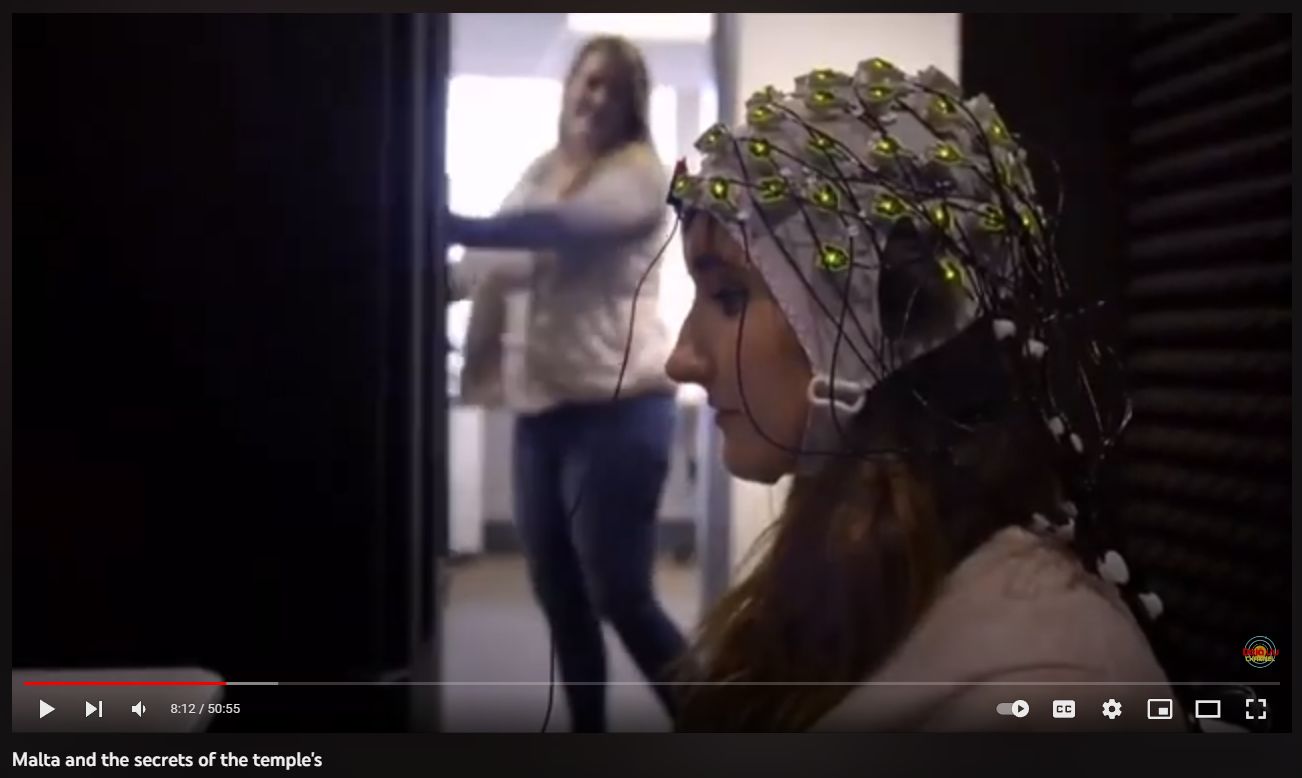Dopamine Rush from Resonance in Malta Hypogeum
150 Hz resonance, entrainment to “high gamma” waves, “linked to conscious awareness.”
“It appears that the Temple People are using sounds to generate transcendental experiences during their burials.”

The claim of experiencing a “dopamine rush from resonance in Malta’s Hypogeum” suggests a phenomenon where individuals reportedly feel a surge of dopamine, a neurotransmitter associated with pleasure and reward, when exposed to certain resonant frequencies within the Hypogeum of Ħal-Saflieni in Malta.
The Hypogeum of Ħal-Saflieni is an underground structure dating back to the Neolithic period, estimated to have been constructed around 4000 to 2500 BCE. It is a UNESCO World Heritage Site and is renowned for its acoustics, which some believe were intentionally designed to enhance the auditory experience within the chambers.
While there have been anecdotal reports of people feeling various sensations, including a sense of calmness, awe, or even altered states of consciousness when visiting the Hypogeum, claims specifically regarding dopamine rushes resulting from resonance are more speculative and less scientifically supported.
Here are a few points to consider:
1. Acoustic Properties: The Hypogeum’s unique acoustic properties, including its reverberation characteristics and resonance frequencies, have been subject to scientific investigation. Studies have shown that certain frequencies within the chambers can amplify sound and create unusual auditory effects, potentially contributing to the site’s mystique and cultural significance.
2. Subjective Experiences: The experience of visiting the Hypogeum can vary greatly among individuals, and subjective reports of sensations like a dopamine rush should be interpreted with caution. Factors such as expectation, suggestibility, and psychological predispositions can influence how people perceive and interpret their experiences in such environments.
3. Scientific Evidence: While there is scientific evidence supporting the idea that exposure to certain frequencies or music can affect mood and physiological responses by influencing neurotransmitter levels, the specific claim of experiencing a dopamine rush from resonance in the Hypogeum would require more rigorous scientific investigation to validate.
4. Cultural and Historical Context: It’s important to consider the cultural and historical significance of the Hypogeum within the context of Maltese archaeology and folklore. The site has long been associated with spiritual practices and rituals, and beliefs about its supposed mystical properties have been passed down through generations.
In summary, while the Hypogeum of Ħal-Saflieni is undoubtedly a fascinating archaeological site with remarkable acoustics, claims of experiencing a dopamine rush specifically from resonance within its chambers should be approached with skepticism and evaluated within the broader context of scientific inquiry and cultural interpretation. Further research into the site’s acoustic properties and their potential effects on human physiology and psychology may shed light on the veracity of such claims.